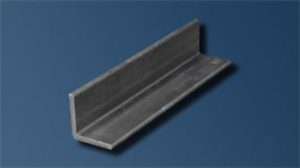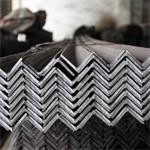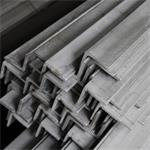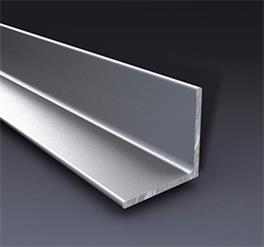Stainless Steel Angle Bar
Grade and Quality:
201,202,303,304, 304L,316,316L,321,410,420 etc.
Standard:
ASTM A276,EN10272,GB9787
Dimension:
As customer’s requirements
Stainless steel Hot-rolled Equilateral Angle Bar
Specified length is 4,5,6m. Length Tolerance ≤+40mm/pcs
Shape:
Right angle Tolerance is 91°±2°
Max Bending:4mm/m. Whole Body’s max bending≤0.4%length/pcs.
Surface:
pickled&sand blasting&bright,we can polish the bar grit400&600&800 according to customer’s requirement.
Tolerance:
according to customer’s requirements.
Products Usage:
Stainless steel angle bars manufactured by Jawaysteel can be used in machine manufacture, vehicle, ships, construction, chemical industry.
Packing:
Standard Export Seaworthy Packing :With waterproof paper, metal belt pack sheet, put them in wooden pallet, put in container.
Jawaysteel Corporation is one of the biggest manufacturers and producers for stainless steel bars.We can supply various sizes of stainless steel bars on high quality but factory supply pricing at most competitive rate.
Detailed introduction
Stainless steel angle steel is a long strip of steel that is perpendicular to each other on both sides. There are equilateral stainless steel angles and unequal stainless steel angles. The sides of the equilateral stainless steel angle are equal in width. The specifications are expressed in millimeters of side width × side width × side thickness. For example, “∠25×25×3” means an equilateral stainless steel angle with a side width of 25 mm and a side thickness of 3 mm. It can also be expressed by model number, the model number is the number of centimeters of the side width, such as ∠2.5#. The model does not indicate the size of the different side thicknesses in the same model. Therefore, the side width and thickness of the stainless steel angle steel are filled in the contract and other documents, and the model is not to be used alone. The specification of hot-rolled equilateral stainless steel angle steel is 2#-20#.
Product description:
The specifications are expressed in millimeters of side width × side width × side thickness. For example, “∠25×25×3” means that the width is
An equilateral stainless steel angle of 25 mm and a side thickness of 3 mm. It can also be expressed by model number, the model number is the number of centimeters of the side width, such as ∠3#. The model does not indicate the size of the different side thicknesses in the same model. Therefore, the side width and thickness of the stainless steel angle steel are filled in the contract and other documents, and the model is not to be used alone. The specification of hot-rolled equilateral stainless steel angle steel is 2#-20#.
Stainless steel angle steel can be composed of various force-receiving members according to the different needs of the structure, and can also be used as a connecting member between the components. Widely used in a variety of building structures and engineering structures, such as beams, bridges, transmission towers, lifting and transport machinery, ships, industrial furnaces, reaction towers, container racks and warehouse shelves.
Stainless steel angle steel is a carbon structural steel for construction. It is a simple section of steel and is mainly used for the frame of metal components and workshops. Good weldability, plastic deformation properties and certain mechanical strength are required in use. The raw material billet for producing stainless steel angle steel is a low carbon square billet, and the finished stainless steel angle steel is delivered by hot rolling forming, normalizing or hot rolling.

Type and specification:
It is mainly divided into two types: equilateral stainless steel angle steel and unequal side stainless steel angle steel. Among them, the unequal side stainless steel angle steel can be divided into two types: unequal width and unequal thickness.
The specifications for stainless steel angles are indicated by the dimensions of the side length and the side thickness. Since 2010, the specifications of domestic stainless steel angle steel are No. 2-20, and the number of centimeters of the side length is the number. The same stainless steel angle steel often has 2-7 different side thicknesses. The imported stainless steel angle steel indicates the actual size and thickness of the two sides and indicates the relevant standards. Generally, a large stainless steel angle steel with a side length of 12.5 cm or more is a medium-sized stainless steel angle steel between 12.5 cm and 5 cm, and a small stainless steel angle steel with a side length of 5 cm or less.
The delivery length of stainless steel angle steel is divided into two types: fixed length and double rule. The range of the fixed length is 4-9m, 4-12m, 4-19m and 6-19m depending on the specification number. The length range of Japanese stainless steel angle steel is 6-15m.
The section height of the unequal stainless steel angle is calculated as the long side width of the unequal stainless steel angle.
Appearance quality requirements:
The surface quality of stainless steel angle steel is specified in the standard. Generally, there must be no harmful defects in use, such as delamination, crusting, cracks, etc.
The allowable range of geometrical deviation of stainless steel angle steel is also specified in the standard, generally including bending, edge width, edge thickness, apex angle, theoretical weight, etc., and specifies that the stainless steel angle steel must not have significant torsion.
304 stainless steel angle steel
The 304 stainless steel is composed of 18Cr-9Ni, which is the most widely used stainless steel and heat resistant steel on the market. Used in food production equipment, Xitong chemical equipment, nuclear energy, etc. 304 is 0Cr18Ni9.
There is rust in the 304 material, which may be due to the following reasons:
1. The presence of chloride ions in the environment of use.
Chloride ions are widely present, such as salt, sweat, sea water, sea breeze, soil, and so on. Stainless steel in the presence of chloride ions, corrosion is very fast, even more than ordinary low carbon steel.
Therefore, there is a requirement for the use environment of stainless steel, and it is necessary to wipe frequently to remove dust and keep it clean and dry.
There is an example in the United States: a company uses a oak container to hold a solution containing chloride ions. The container has been used for nearly a hundred years. It is planned to be replaced in the 1990s. Because the oak material is not modern enough, the container is replaced with stainless steel for 16 days. Leakage due to corrosion.
2. No solution treatment.
The alloying elements are not dissolved in the matrix, resulting in a low content of the matrix microstructure and poor corrosion resistance.
3. This titanium-free and antimony-free material has a tendency to be naturally intergranular.
The addition of titanium and niobium, together with a stable treatment, can reduce intergranular corrosion.
A high-alloy steel that resists corrosion in air or chemically corrosive media. Stainless steel has an aesthetically pleasing surface and good corrosion resistance. It does not require surface treatment such as plating to give full surface properties to stainless steel. One of the aspects of steel, commonly referred to as stainless steel. Representative properties include high-alloy steels such as 13 chrome steel and 18-8 chrome nickel steel.
From the perspective of metallography, because stainless steel contains chromium and the surface forms a very thin chromium film, this film is isolated from the intrusion of oxygen in the steel to resist corrosion. In order to maintain the corrosion resistance inherent in stainless steel, steel must contain more than 12% chromium.
Application:
304 is a versatile stainless steel that is widely used to make equipment and parts that require good overall performance (corrosion resistance and formability). 304 stainless steel is a grade of stainless steel produced in accordance with American ASTM standards. 304 contains 19% chromium and contains 9% nickel.
304 stainless steel application:
304 is the most widely used stainless steel and heat resistant steel. Used in food production equipment, Xitong chemical equipment, nuclear energy, etc.


